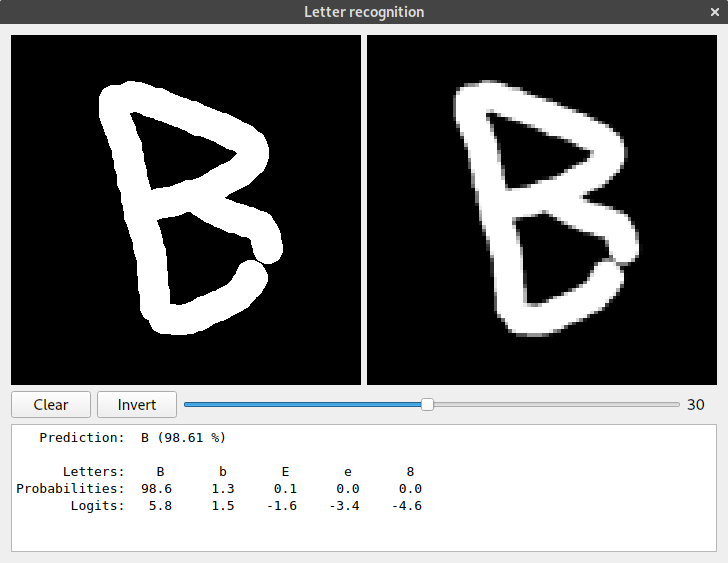This project is an exploration of Tensorflow library (v1). It has been used to train Convolutional Neural Networks (CNNs) to recognise characters (digits, lower- and uppercase letters) from images.
As for the database, the Chars74K dataset has been used.
It contains 3 types of images: natural photos, handwritten characters (on a tablet) and images synthesised from fonts.
To download the dataset use the script at database/chars74k/prepare_database.py.
This will download all the necessary files, extract them and perform the initial preperation of image files for future use.
I've written this some time ago. Since then tensoflow had some updates, along with version v2.
The requiremets.txt file has been generated with pipreqs after some time
and it doesn't reflect the state of version from development time,
so there are multiple deprecation warnings and some things do not work at all.
This is a big TODO, but at the moment I don't have time to fix it.
.
├── cnn_model.py # definitions of tensorflow models
├── cv2_show.py # some utilities for viewing images dataset
├── database/ # all the datasets used and their loaders
├── data.py # generalization over datasets and utilities for image destortions, etc.
├── gui.py # PyQt GUI for testing recognition on hand written images
├── log.py # logging
├── models/ # here tensorflow models are stored (this is gitignored)
└── run.py # main launcher
The main script of interest is run.py (but other scripts may also provide mains for some special usage).
The models are stored in models/ directory, but it is ignored, so first a model has to be trained before anything can be done.
Some pretrained and quite well-working models can be found in releases to avoid the time consuming training process.
See help:
python run.py -h
Probably the most interesting thing that is also straghtforward to use is the GUI:
python run.py -G
Some screenshots:
Another quite straightforward option is the visualization of a walk in latent space:
python run.p -DW





